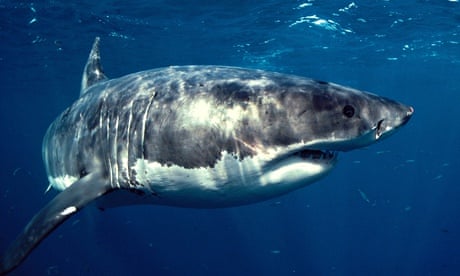Nearly a month since the first shark was killed in Western Australia's controversial cull, and with the recent release of attack statistics, the decision still appears to be drastic.
Global opposition from scientists, conservationists and even shark attack victims shows there is little justification for these actions.
The Australian public is up in arms over the way the country is being run and the way their wildlife is being treated, with protests in the cities of Perth, Sydney, Adelaide and the beaches of Victoria and Queensland.
The prime minister, Tony Abbott, and environment minister, Greg Hunt, have come under fire in recent weeks for their apparent lack of concern for the environment and have faced calls for a redress of the shark kill policy.
Recent reports suggest that no great whites have been caught on drum lines in Western Australia, but there has been very little concern over the other sharks caught – 63 tiger sharks, two makos and one blacktip. Even though the great white is classed as vulnerable on the IUCN red list of endangered species, the goal of the cull is to seek out all potential killer sharks of more than three metres and most likely "maneaters" within WA coastal waters.
As recently as 2012, a report commissioned by the WA government rejected the use of drum lines as an effective option to reduce shark bite risk, so the deployment of these lines now seems to be a huge step backwards in shark conservation.
The Western Australian government argues that numbers caught, tagged released and killed fall in line with those caught in shark nets and drum lines in Queensland, where 82% of undersized sharks have been released successfully.
The actions of the WA government is in stark contrast to activities in New South Wales, where a 40-year-old man was charged this month with killing a juvenile great white and fined more than AUS$18,000.
There were 10 shark attacks in Australian waters in 2013 – the lowest annual total since nine were recorded in 2008 and lower than the 12.3 average attacks per year during the past 10 years (2003-2012), according to researchers at the University of Florida.
Very little is known about population numbers of great whites globally. The Guardian reported last week that the cull could affect South African populations, however the key issue here that does not appear to be addressed is the long timeframe for great whites to reach sexual maturity. Killing sharks of more than three metres takes out the potential breeding stock and as numbers are still unknown this is a major cause for concern.
Opposition leader Mark McGowan has called for the use of shark shields along the beaches of WA calling these a more effective solution than drum lines. Although these methods of 'shark protection' are not 100% effective, surfers and bathers along the coast of WA need to realise that this is the domain of the shark and therefore they are taking the risk.
Further afield, a spate of shark attacks in recent years in Hawaii that resulted in the first shark-attack deaths in the state since 2004, spurred sales of personal electric deterrent devices that promise to help keep the predators away, with swimmers and surfers strapping devices that emit electric pulses to their ankles or to their surf boards. This year Hawaiian authorities have called for further protection of elasmobranchs within state waters with penalties as high as US$10,000 for any person who knowingly captures, harms or kills sharks and rays.
A drastic cull programme adopted in Hawaii after a spate of attacks between 1959-1976 in which 4,500 sharks were killed was deemed "ineffective" by authorities because shark attack numbers remained the same. And a cull can have a dramatic effect on population: during shark control programmes in South Africa between 1984 and 1995, an annual average of 40 great whites were caught in nets in Natal but only 15% were released alive.
Surely the people responsible for the planning and implementation of a shark culling programme should listen to the scientific community of the world, consider the impact that the culling of these species will have on the wider ecosystem and acknowledge that previous culling programmes have not been successful?
